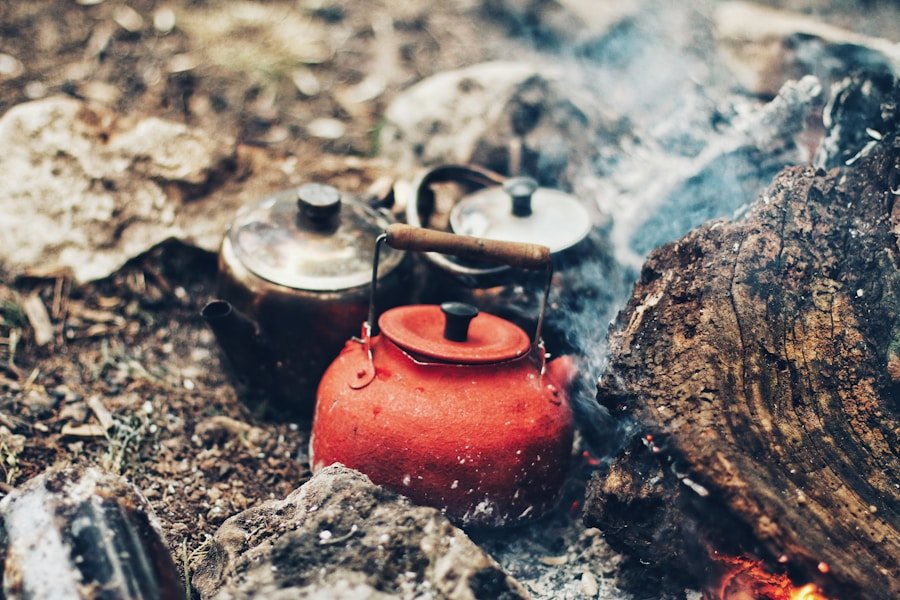Establishing an immersive atmosphere is essential for effective campfire storytelling. The combination of the crackling fire, darkness, and natural sounds creates a unique ambiance that enhances the narrative experience. To optimize the setting, consider using dim lighting or lanterns to create a cozy and intimate environment.
Arranging seating in a circular pattern around the fire fosters a sense of community and connection among listeners. The campfire location is also crucial – select a spot free from distractions and with a clear view of the storyteller. By attending to these details, you can create an environment conducive to engaging and entertaining storytelling.
In addition to setting the scene, the strategic use of props and decorations is vital for campfire storytelling. Incorporating comfort-enhancing elements, such as blankets, pillows, or themed decorations, can immerse listeners in the narrative. Integrating natural elements, like leaves, branches, or rocks, can further enhance the setting’s authenticity.
By paying attention to these details, you can create a visually appealing and inviting space that captivates your audience and sets the stage for a memorable storytelling experience.
Key Takeaways
- Engage and entertain your audience with captivating storytelling techniques such as suspense, humor, and vivid descriptions.
- Set the perfect atmosphere for campfire storytelling by choosing a cozy and comfortable location with minimal distractions.
- Select engaging and entertaining tales that are appropriate for the audience and setting, and consider incorporating local folklore or legends.
- Keep your audience engaged by using expressive body language, varying your tone and pace, and encouraging participation through interactive storytelling.
- Enhance the storytelling experience by incorporating props, visual aids, and sound effects to add a touch of drama and bring the story to life.
Choosing the Right Story: Selecting Engaging and Entertaining Tales for the Campfire
Selecting the right story is essential for engaging and entertaining campfire storytelling. When choosing a story, consider the interests and preferences of your audience. For example, if you are telling stories to a group of children, consider selecting tales that are age-appropriate and have a sense of wonder and adventure.
On the other hand, if your audience consists of adults, you may want to choose stories that are more complex and thought-provoking. Additionally, consider the theme or mood that you want to convey – whether it’s spooky ghost stories, heartwarming tales, or thrilling adventures, selecting a story that aligns with your desired atmosphere is key. In addition to considering your audience and the desired mood, it’s important to choose stories that are well-suited for oral storytelling.
Look for tales that have strong characters, vivid imagery, and compelling plots that will capture the imagination of your listeners. Folktales, myths, and legends are often great choices for campfire storytelling, as they have been passed down through generations and are designed to be told aloud. By selecting stories that are engaging and well-suited for oral storytelling, you can ensure that your audience will be captivated and entertained throughout the entire experience.
FAQs
What is campfire storytelling?
Campfire storytelling is the tradition of sharing stories around a campfire. It is a popular activity during camping trips and involves participants taking turns to tell stories, often with a focus on creating a spooky or thrilling atmosphere.
What are some tips for engaging campfire storytelling?
Some tips for engaging campfire storytelling include choosing a captivating story, using expressive body language and vocal inflections, creating a spooky or mysterious atmosphere, and involving the audience by asking questions or encouraging participation.
How can I make my campfire storytelling entertaining?
To make campfire storytelling entertaining, consider incorporating elements of suspense, surprise, and humor into your stories. Use descriptive language to set the scene and build tension, and consider adding sound effects or props to enhance the storytelling experience.
What are some popular themes for campfire storytelling?
Popular themes for campfire storytelling include ghost stories, urban legends, folklore, myths and legends, and personal anecdotes or experiences. These themes often lend themselves to creating a sense of mystery and intrigue around the campfire.
How can I keep the audience engaged during campfire storytelling?
To keep the audience engaged during campfire storytelling, consider maintaining eye contact, varying your tone and pace, and using gestures to emphasize key points in the story. Additionally, encourage audience participation by asking questions or inviting them to contribute to the storytelling experience.












